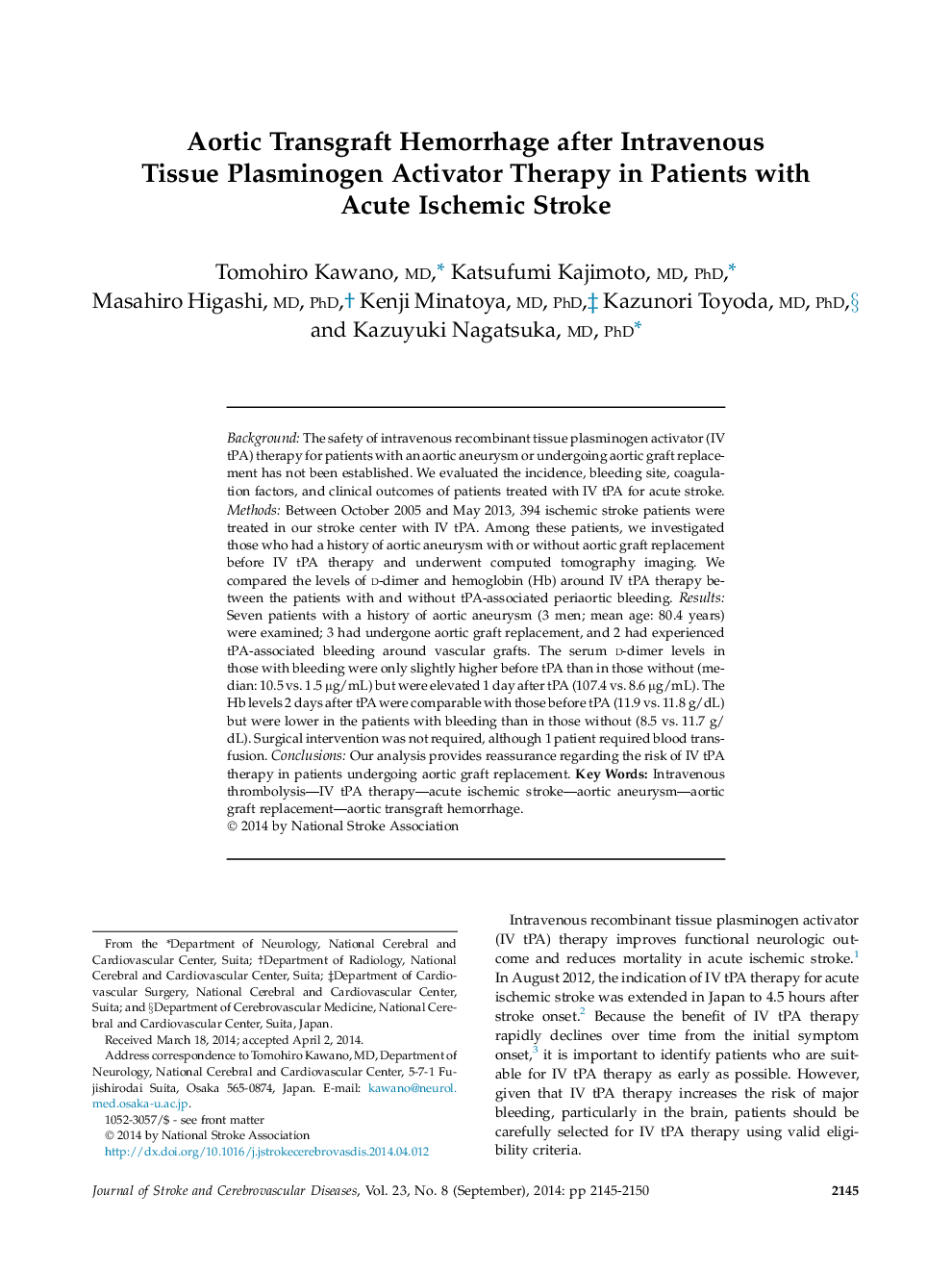| Article ID | Journal | Published Year | Pages | File Type |
|---|---|---|---|---|
| 2706010 | Journal of Stroke and Cerebrovascular Diseases | 2014 | 6 Pages |
BackgroundThe safety of intravenous recombinant tissue plasminogen activator (IV tPA) therapy for patients with an aortic aneurysm or undergoing aortic graft replacement has not been established. We evaluated the incidence, bleeding site, coagulation factors, and clinical outcomes of patients treated with IV tPA for acute stroke.MethodsBetween October 2005 and May 2013, 394 ischemic stroke patients were treated in our stroke center with IV tPA. Among these patients, we investigated those who had a history of aortic aneurysm with or without aortic graft replacement before IV tPA therapy and underwent computed tomography imaging. We compared the levels of d-dimer and hemoglobin (Hb) around IV tPA therapy between the patients with and without tPA-associated periaortic bleeding.ResultsSeven patients with a history of aortic aneurysm (3 men; mean age: 80.4 years) were examined; 3 had undergone aortic graft replacement, and 2 had experienced tPA-associated bleeding around vascular grafts. The serum d-dimer levels in those with bleeding were only slightly higher before tPA than in those without (median: 10.5 vs. 1.5 μg/mL) but were elevated 1 day after tPA (107.4 vs. 8.6 μg/mL). The Hb levels 2 days after tPA were comparable with those before tPA (11.9 vs. 11.8 g/dL) but were lower in the patients with bleeding than in those without (8.5 vs. 11.7 g/dL). Surgical intervention was not required, although 1 patient required blood transfusion.ConclusionsOur analysis provides reassurance regarding the risk of IV tPA therapy in patients undergoing aortic graft replacement.
